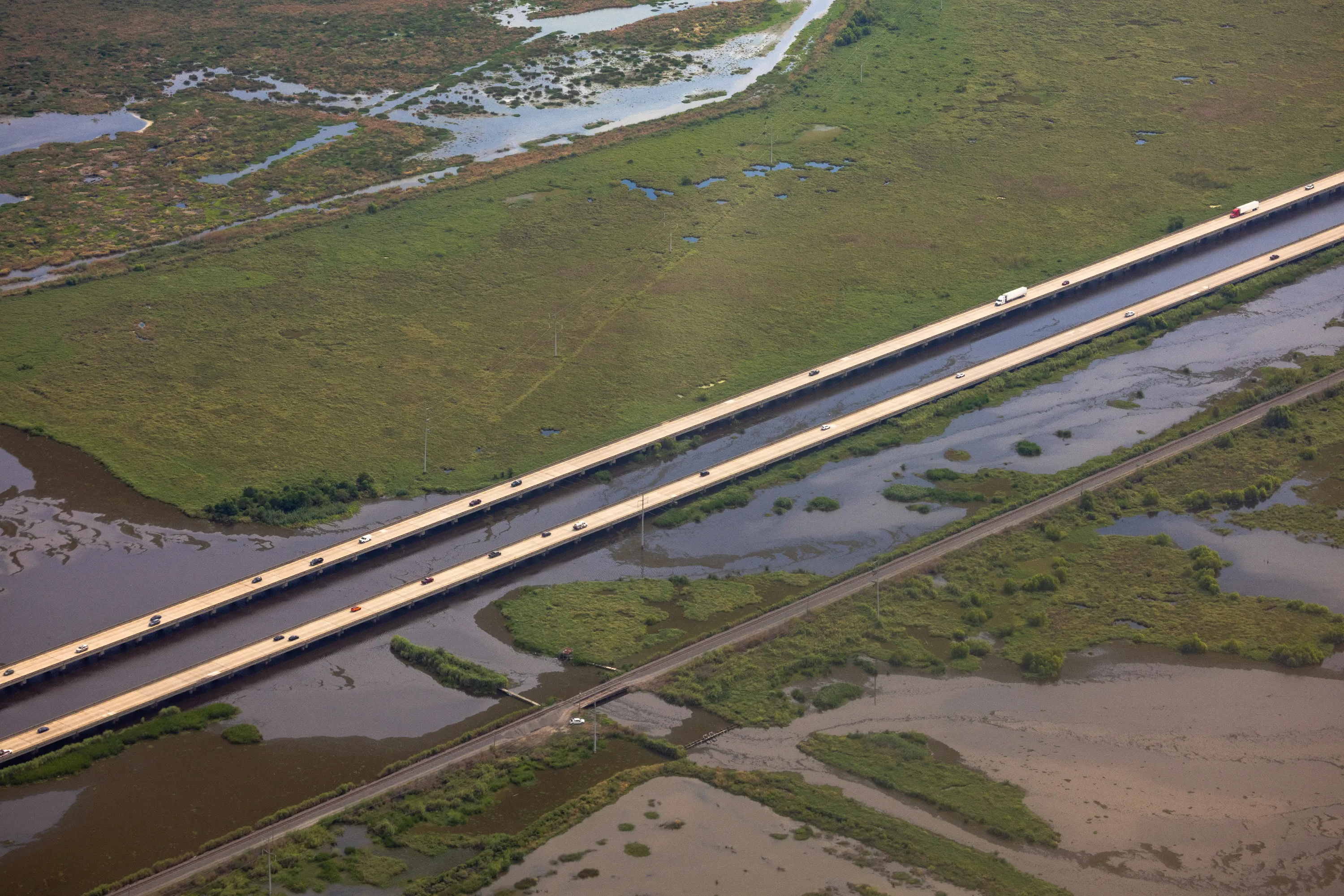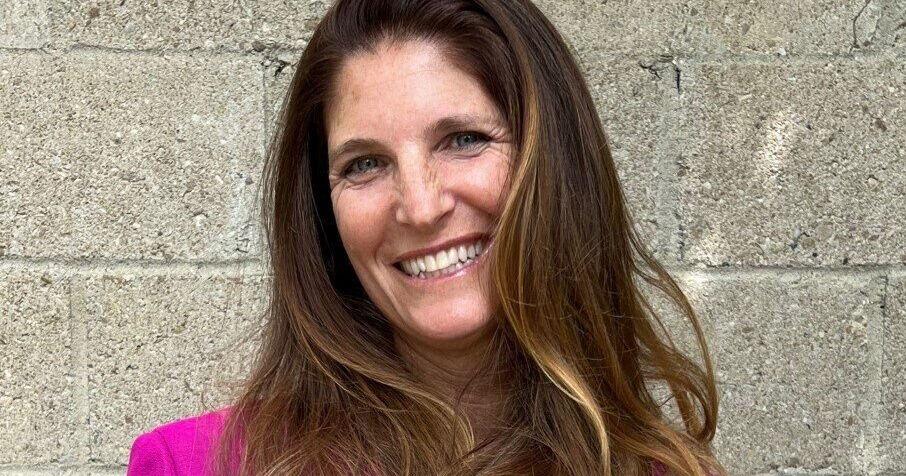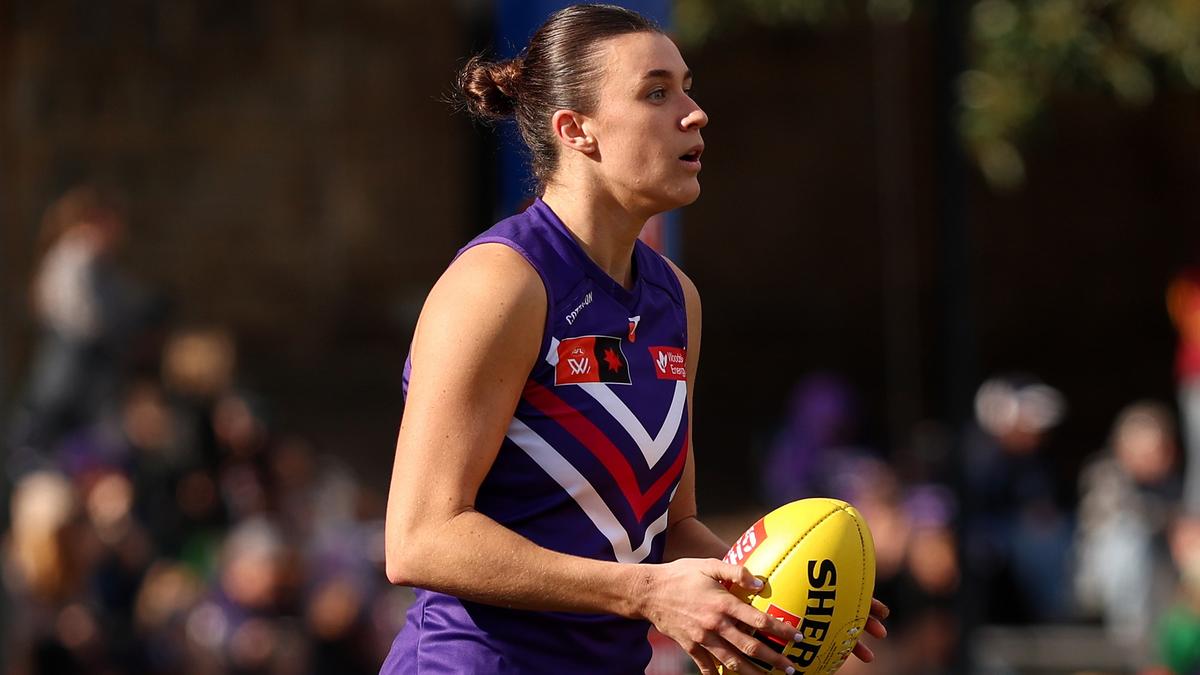20 Years After Katrina, Louisiana Still Struggles With Evacuation Plans That Minimize Health Risks

In late August 2020, Ashlee Guidry and her staff kept a wary eye on guidance from local officials as Hurricane Laura passed over Cuba en route to southwestern Louisiana. Guidry was responsible for the safety of dozens of people living at Stonebridge Place, an assisted living and memory care facility in Sulphur.
For days, Laura was just a tropical storm, wet and disorganized. But the Gulf of Mexico was warm — much warmer than average. Local officials worried the temperatures could supercharge the storm as it spun toward the Louisiana coast. So, just as Laura approached the open Gulf, two days before it would make landfall 30 miles south of Stonebridge, Guidry made the call to evacuate.
“I don’t think anybody anticipated it to be as strong as it was,” she said.
Residents were sent to a partner facility about four hours north. Those with the most serious medical conditions were taken by ambulance. Others packed into vans. They avoided the highways, taking backroads for most of the drive. In the time it took to settle into the other facility, Laura rapidly strengthened into a Category 4 hurricane. It eventually became one of the strongest hurricanes to make landfall in the U.S. in the last century. It also tied for the fastest rate of intensification, with wind speeds increasing by 65 mph in just 24 hours.
A hotter Gulf and wetter climate create more opportunity for hurricanes to intensify much faster with less notice to call for evacuations, as also seen in more recent storms like Hurricanes Ida and Helene. It’s still hard to predict how much or how fast a storm will strengthen, despite recent advances in forecasting.
Representatives of southern Louisiana communities have pressed the state to overhaul its infrastructure by turning highway shoulders into temporary travel lanes to make it easier for residents to leave as the window for evacuation shortens. But the state’s underfunded Department of Transportation and Development has balked at the multibillion-dollar price tag.
The process of evacuating can be dangerous, especially for people living in medical facilities, older adults, or those dealing with chronic health issues. That’s why planning and timing are critical, said Guidry and other medical professionals. Gridlocks, bottlenecks, and vehicle breakdowns can result in injury, even death. In 2005, nearly 100 people died in the evacuation of Houston ahead of Hurricane Rita, which also rapidly intensified, largely due to a fatal combination of gridlock and extreme heat.
In 2022, the Louisiana State Legislature created a task force to study the state’s contraflow plan after lengthy evacuation times ahead of Hurricane Ida the year before. When the state enacts contraflow, all travel lanes on main evacuation routes lead out of southeastern Louisiana, allowing more people to leave in a short time frame. It was once the state’s go-to strategy for last-minute mass evacuations, though it isn’t always possible to implement. To launch the state’s current contraflow plan, several triggers must be met at least 72 hours before a storm’s landfall.
“If you go back the last three years, the storms have been pretty serious. Quickly intensifying, shifting direction, and lasting longer,” said Louisiana Rep. Matt Willard (D-New Orleans), who authored the resolution. “So we really do need to take our contraflow processes and evacuation processes seriously and start looking at what they look like over the next decade.”
As hurricanes intensify faster, the state’s existing contraflow plan has grown less feasible. Contraflow is also labor-intensive and can make it harder to stage resources to respond in the aftermath of a storm, so state officials have moved away from the evacuation strategy.
The task force delivered several recommendations, from shortening the time needed to initiate contraflow to repairing evacuation routes closed due to safety. The task force also introduced a strategy used in Texas and Florida: widening existing highways so the shoulders can be used as additional travel lanes to relieve congestion, known as “evaculanes” or “emergency shoulder use.”
The state Department of Transportation and Development declined to pursue any of the recommendations. Instead, state agency spokesperson Rodney Mallett said, officials have focused on encouraging residents not to rely on strategies like contraflow, which is meant to be used rarely as a last resort.
Contraflow requires immense coordination among state and local agencies as well as Mississippi officials. The state has implemented contraflow twice: to evacuate 1.2 million residents ahead of Hurricane Katrina in 2005 and then for a mass evacuation of 2 million residents ahead of Hurricane Gustav in 2008. It was also partially implemented for evacuations ahead of Hurricane Ivan in 2004.
Although contraflow requires less lead time in other states, Louisiana officials say a shorter time frame isn’t possible.
The current 72-hour plan includes 22 hours for transportation staff to prepare the roads and change thousands of signals to switch directions. For Katrina, the state completed preparations for contraflow within six hours, allowing officials to open all lanes for 25 hours before the weather deteriorated.
An Alternative Evacuation Strategy
Louisiana isn’t the only state hesitant to rely on contraflow. Florida, the only state hit by more hurricanes than Louisiana and Texas, has never implemented its contraflow plan. Instead, in 2016, it implemented its plan for emergency shoulder use.
“We were looking for something that was more efficient for us to do that took less resources,” such as law enforcement staff, said Rudy Powell, the Florida Department of Transportation’s chief engineer of operations.
Contraflow is also less safe to operate at night, while emergency shoulders can run continuously without blocking out-of-state resources from entering areas ahead of the storm, such as groceries and other supplies. Depending on which highways need more capacity, Powell said, the emergency use of shoulders takes two to four hours to implement.
“This is our go-to strategy for hurricane evacuation traffic,” Powell said. “The times we implemented it, it’s made a big difference in volume and speed. The whole idea is to keep traffic flowing.”
But the Louisiana transportation department said the strategy would be too expensive.
Unlike Florida, Louisiana hasn’t historically constructed shoulders wide enough to be safely used as temporary travel lanes. The standard for highway and bridge construction in Florida has long required the state to build shoulders at least 10 feet wide. In Louisiana, shoulders must be at least 8 feet wide to accommodate traffic. They also have to be structurally secure. Louisiana roads and bridges are narrower, such as the shoulders on the Interstate 10 bridge over the Bonnet Carré Spillway.
In 2024, the transportation department estimated that reconstructing the shoulders along I-10, I-59, and I-55 and their bridges would cost at least $1 billion, not including other structures that would need to be rebuilt to accommodate the new shoulder width. Most of that money would go toward widening the bridges, which would cost up to $28 million per mile.
Shawn Wilson led the Department of Transportation under Gov. John Bel Edwards from 2016 until Wilson resigned in early 2023 for an unsuccessful run for governor. He said the agency had begun taking steps toward rehabilitating the state’s inconsistent shoulder construction before he left, even incorporating wider shoulders on new bridges along I-12.
But any road improvements, Wilson said, are weighed against the cheaper cost to simply maintain state highways as they are. Louisiana ranks among the lowest in transportation spending, and the state’s spending on highways has fallen since 2007. A decades-old fuel tax is the only consistent source of revenue, but it hasn’t been enough even to maintain the state’s aging infrastructure. And the lack of funding has led to a $19 billion backlog in road projects, said Steven Procopio, president of the Public Affairs Research Council of Louisiana. In 2023, the state and federal fuel tax combined raised $600 million in revenue for the agency. Special capital projects typically rely on state surplus dollars, Procopio said.
He noted the state’s 20-cent-per-gallon fuel tax has been the same since 1990 and much of the revenue goes toward paying off old debt, not new projects.
“Inflation is just eating up the spending power of these dollars,” he said.
When To Leave
Debra Campbell said it took her 14 hours to make the 200-mile drive to Lake Charles when she evacuated New Orleans the day before Hurricane Katrina made landfall. It was the same day then-Mayor Ray Nagin finally called for a mandatory evacuation of the city. (Nagin later admitted he could have issued the order earlier.)
“It was hectic,” Campbell said. “It took so many hours for our people to get to safety. But we got out.”
Campbell made it through the slow-moving traffic unscathed, but she said others were plagued with stressors like running out of gas or threats of violence from other frustrated motorists.
While more than 1 million people made it out of southeastern Louisiana, tens of thousands remained behind. Many couldn’t leave. Some didn’t have a car, while others couldn’t afford the gas needed to evacuate or a multiday hotel stay while waiting to return.
Campbell chaired the state’s Contraflow Task Force and leads A Community Voice-Louisiana, a nonprofit that advocates on behalf of low- to moderate-income families in the state. For years, Campbell has advocated for state and local officials to find more ways to get people out of New Orleans and the surrounding parishes, especially people who can’t afford the cost of evacuation.
“The people don’t have the resources to evacuate as it is, so they’re not going to make a move until the very last minute,” she said.
One University of Florida study found that insecure access to transportation can play a key role when making evacuation decisions, including whether residents can receive medical services. Low-income, car-less, and senior residents face an increased health risk throughout a hurricane as a result.
In lieu of infrastructure changes, state transportation officials want residents to leave as early as possible. People who are especially vulnerable to health issues while on the road should prepare their medications, monitor their blood pressure, stay hydrated, and ensure they’re able to stay cool while traveling.
The stress of traveling can exacerbate health conditions, on top of the anxiety that weighs many Louisianians down during hurricane season, said DePaul Community Health Centers pharmacy director Raymond Strong. “For all diseases, whether it’s asthma, hypertension, cancer, or HIV, stress makes it worse,” he said. Planning ahead, he said, can help manage the amount of stress patients feel.
Campbell and others advocating for the state to start planning for more rapidly intensifying storms agree that leaving early is important for safety. But Campbell isn’t convinced it’s realistic, especially for working-class residents.
“People’s finances don’t always allow them to leave early. They have to be pushed to move,” she said, adding that without a mandatory evacuation order, businesses stay open and some people try to stay and work as long as possible. “That’s why we need [the state] to open up all the lanes.”
Although the state isn’t looking to make big changes to its evacuation plans, Campbell said, there has been progress with New Orleans officials. Public buses provided to evacuate residents from the city to shelters could soon be more easily accessible. The city is also considering another task force recommendation: installing a siren system to help alert residents during tornadoes and other hazards.
Campbell said she hopes city and state officials continue to think of more ways to help people leave before major hurricanes hit.
“We have to offer them as much as we can,” she said. “The task force needed to meet with the people who could make a difference, but now we need to see it implemented.”
This article was produced in collaboration with Verite News.



